Succescase van implementatie van SLS-technologie met Sinterit Lisa in servicebureau
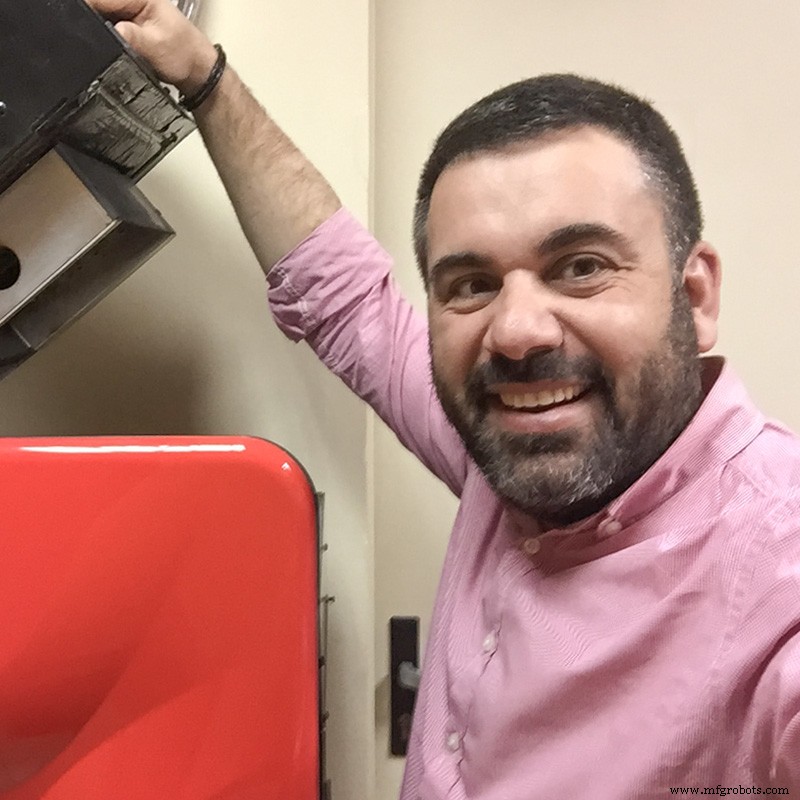 Sinds de introductie op de markt is de Sinterit Lisa-printer een revolutie geweest. Het is de eerste betaalbare SLS-printer in desktopformaat. De hoge kwaliteit, het gebruiksgemak, de lage prijs en het compacte formaat hebben het tot een niche gemaakt in sectoren waar het tot voor kort als onhaalbaar werd beschouwd om deze technologie te introduceren.
Sinds de introductie op de markt is de Sinterit Lisa-printer een revolutie geweest. Het is de eerste betaalbare SLS-printer in desktopformaat. De hoge kwaliteit, het gebruiksgemak, de lage prijs en het compacte formaat hebben het tot een niche gemaakt in sectoren waar het tot voor kort als onhaalbaar werd beschouwd om deze technologie te introduceren.
Een van deze sectoren is het servicebureau , bedrijven die diensten verlenen aan andere bedrijven en die zowel ontwerp, engineering als advies kunnen zijn. Een van de bijzonderheden van dit soort bedrijven is dat ze over het algemeen in kantoren zijn gevestigd. Daarom was het traditioneel onmogelijk om 3D SLS-printapparatuur te implementeren in dit type bedrijf, omdat het niet beschikte over de nodige ruimte of andere vereisten zoals gasinstallaties of krachtige elektrische voorzieningen.
Dit heeft ertoe geleid dat veel bedrijven, zoals ontwerpstudio's, ingenieursbureaus of kleine prototyping-bedrijven, van oudsher hun toevlucht moesten nemen tot het uitbesteden van deze technologie, met alle kosten van dien.
Een van deze voorbeelden zijn kleine prototypingbedrijven, meestal beperkt tot het gebruik van FDM of SLA. We hebben de technisch directeur van een van hen geïnterviewd en hij heeft ons verteld over zijn ervaring met het toevoegen van SLS-technologie aan zijn serviceportfolio door een SLS Sinterit Lisa 3D-printer aan te schaffen.
F2P: Goedemorgen Eloy. Kunt u ons iets vertellen over uw professionele achtergrond en uw ervaring in de wereld van 3D-printen en prototyping?
E.B.: Ik ben 11 jaar technisch directeur geweest van Eceleni, een bedrijf dat zich toelegt op de fabricage van prototypes en korte series, maar mijn oorsprong komt uit industrieel ontwerp, zowel in product- als in matrijsontwerp. De eerste keer dat ik een stereolithografie zag, was meer dan 20 jaar geleden, toen ik als ontwerper in een gieterij werkte. De waarheid is dat de klant die het heeft gebracht ons niet heeft verlaten of aangeraakt. Destijds sprak niemand over 3D-printen, alleen over stereolithografie.
F2P: At Eceleni you work both subtractive manufacturing (CNC machining) and additive manufacturing (3D printing) and formative (fast silicone molds). What do you think 3D printing can provide over other technologies?
E.B.: In most cases, 3D printing makes it possible to manufacture geometries that could not otherwise be manufactured (for example Lattices or Voronoi) and immediacy when manufacturing short series or prototypes. Although it is true that in relatively large pieces, both the term and the cost are better for machining, and depending on the quantity, training techniques are still the best option.
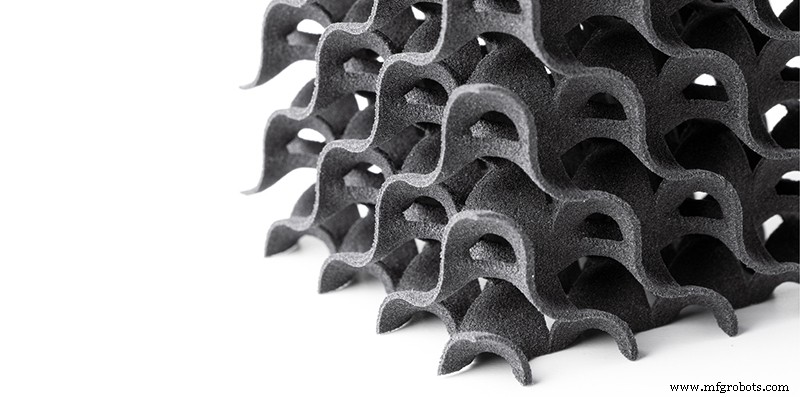
Image 1:Lattice printed with Sinterit Lisa
F2P: Currently you offer 3D printing through Polyjet, FDM and SLS, what does the latter give you compared to the other two?
E.B.: SLS technology has a better surface finish than FDM technology and superior mechanical resistance than PolyJet. For example, the elastomers manufactured by SLS have a superior resistance to breakage than Polyjet's flexible resins.
F2P: Among your equipment you have the Sinterit Lisa 3D SLS printer, could you tell us why you have chosen this SLS 3D printer and not another model that is available on the market?
E.B.: Compared to other options in SLS, it is the best value for money. If instead of being an additive manufacturing service bureau, it were for our own use, we would also have one.
F2P: Sinterit Lisa stands out for being the first SLS 3D printer in desktop format, has this influenced your decision to purchase it? Has this format been of any advantage to you compared to classic industrial formats?
E.B.: Although it does not have the largest bucket on the market, that for many manufactures is a point in favor, since the minimum amount of material is wasted, and the cooling time is much shorter than large machines, so the piece in a shorter time. Depending on the type of part to be manufactured in SLS, we manufacture them without hesitation in the Lisa.
F2P: Could you tell us what your first contact with Sinterit Lisa was like? Has the installation been simple or have you had any problems?
E.B.: Sinterit Lisa comes ready to be used. It is a robust machine, and ready to go to manufacture once unpacked.
F2P: Traditionally, 3D SLS printing has been considered a complex technology, both at the user and implementation level, compared to other more common ones such as FDM. After using Sinterit Lisa, do you consider this to be true? Compared to an FDM printer, do you find using Lisa much more complicated?
E.B.: I suppose they are considered more complex because SLS 3D printers have always been large industrial machines, which, not being as visual as FDM, are understood to be more complex, but in the case of the Sinterit Lisa printer, nothing is further from reality. .
F2P: Sinterit Lisa comes with her own slicing software, Sinterit Studio. How has your experience been with this software?
E.B.: Sinterit Studio is very, very, very easy to use. Even more so than FDM slicers, as you don't have to consider where to put the brackets.
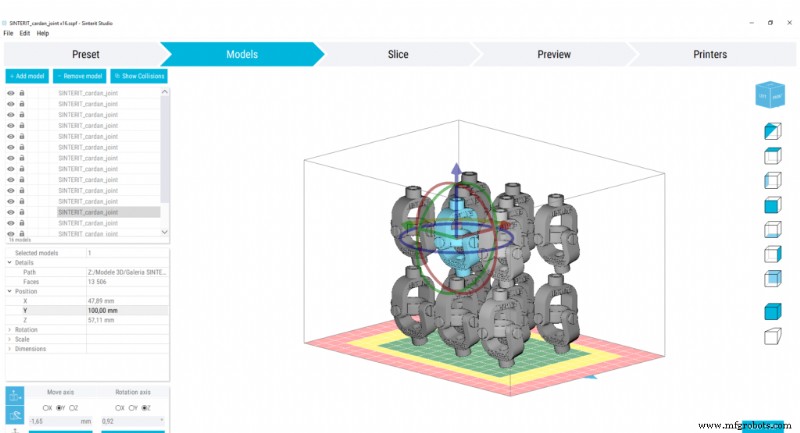
Image 2:Sinterit Studio user interface
F2P: How difficult would you say it is compared to other printers you have worked with?
E.B.: The Sinterit Lisa is a very grateful machine:it does not have complex mechanics and you do not have to worry about the material jamming. The great secret to having good impressions on the Sinterit Lisa is to put the piece in the most irregular position possible, even if it takes a little longer.
F2P: One of the strengths of Sinterit products is their conception as Plug-and-Play equipment. Would you consider this true? Since you received the printer, has it been difficult for you to adopt the workflow and start producing with it?
E.B.: Sure enough, it was plug and play. Being a closed machine, you only have to load the material and print, without further complications. In addition, thanks to the camera installed in the printer, you can verify its operation from the workplace.
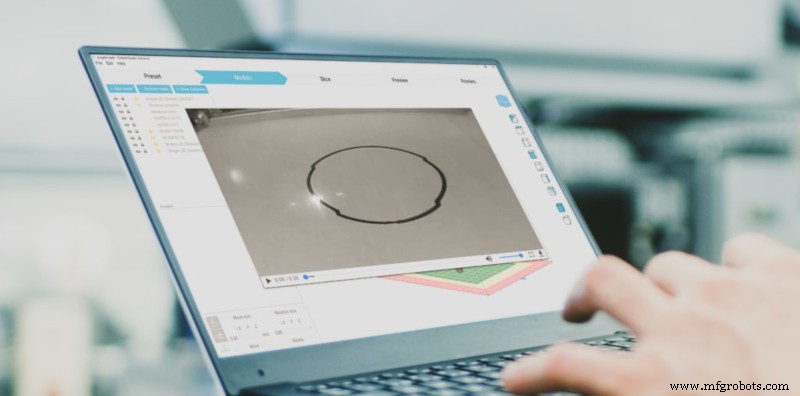
Imagen 3:Supervisión de la impresión a través de la cámara integrada
F2P: After this time with Sinterit Lisa, what would you highlight about her? Do you consider it to have been a successful acquisition?
E.B.: Very successful! We are currently working a lot with the Flexa Gray material, which allows us to make TPU pieces with different hardnesses. It often happens that when a client sees the parts in PA12 in dark gray, she asks if they have been made with the MFJ. It is the same material, and the same color, although with better mechanical properties.
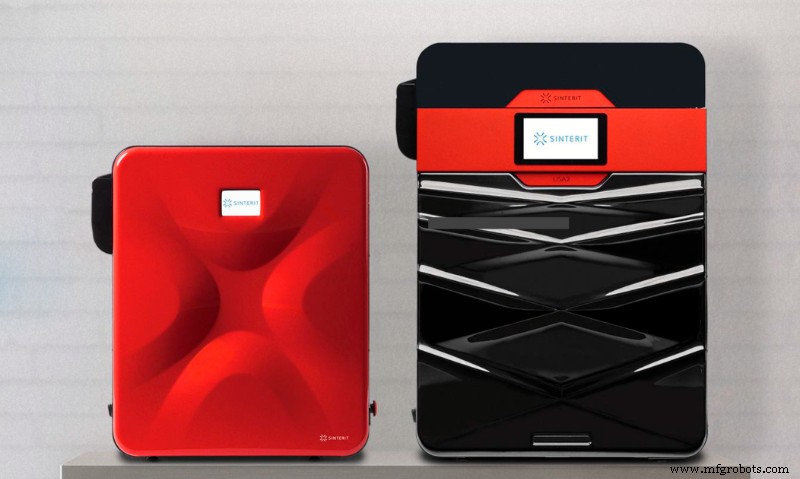
Image 4:Lisa and Lisa Pro 3D SLS Printers
Being able to implement 3D SLS printing equipment in the service bureaus ' own facilities can mean a very significant increase in value for this type of business. Leaving the outsourcing of 3D SLS printing services means, in addition to significant cost savings in the short and medium term, time savings that increase responsiveness to the customer.
Without a doubt, both Lisa and Lisa Pro have become a benchmark in the world of 3D printing, which has led more and more offices and service bureaus to opt for this technology with satisfactory results.
3d printen
- ACEO® onthult nieuwe technologie voor 3D-printen met siliconen
- Interview met een expert:Dr. Bastian Rapp van NeptunLab
- Een inleiding tot 3D-printen met selectief lasersinteren
- 5 redenen waarom uw bedrijf SLS-technologie zou moeten overwegen
- 5 tekenen dat uw 3D-printservicebureau workflowsoftware nodig heeft
- Composiet 3D-printen:een opkomende technologie met een mooie toekomst
- KUHMUTE herontwerpt mobiliteit met SLS 3D Printing
- Hoe een servicebureau in Manhattan opschaalde met de zekering 1
- Op pad met IoT
- Veelzijdig zijn met IoT
- Mijnbouwactiviteiten verbeteren met slimme technologie



